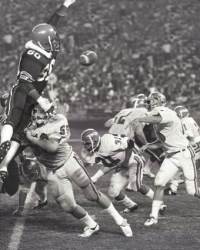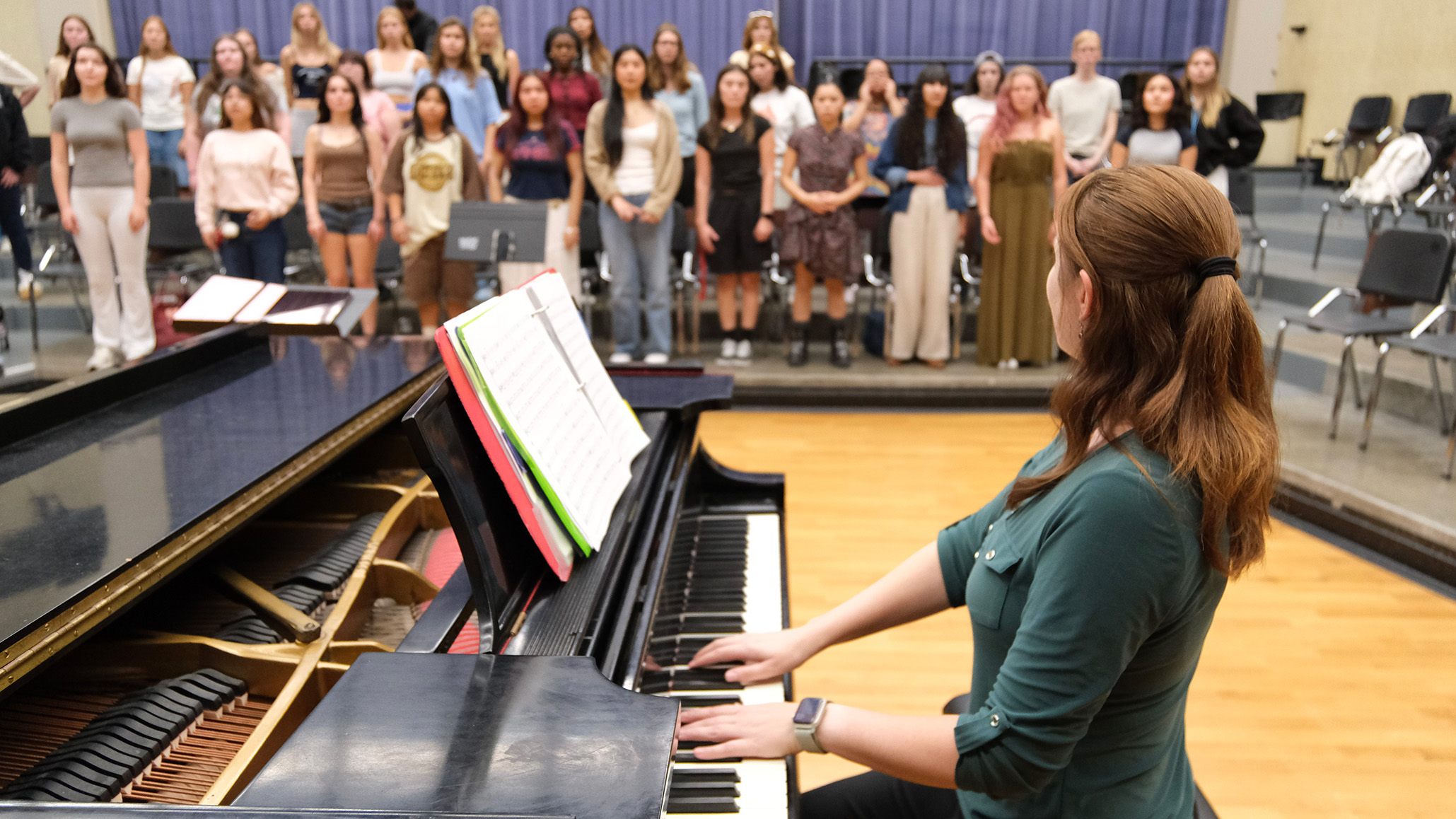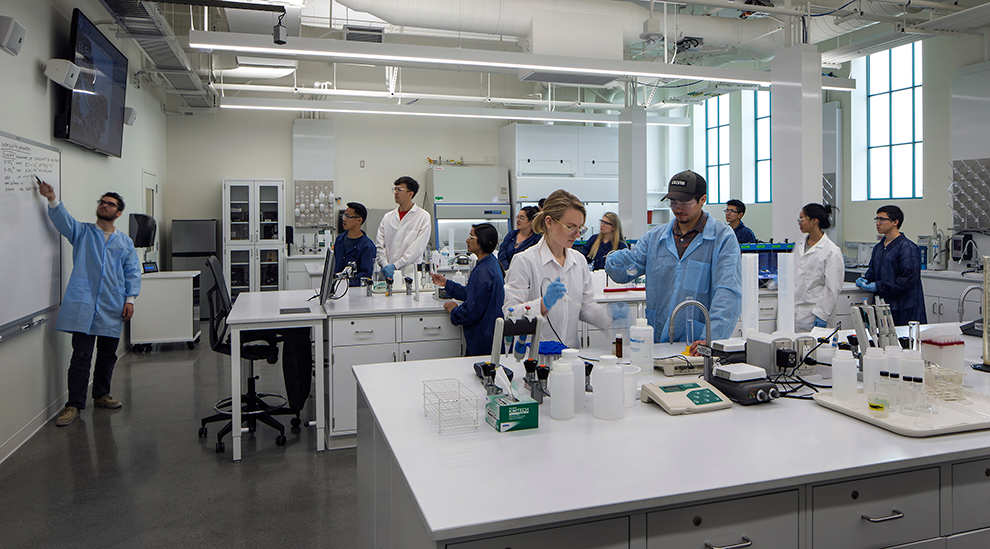Capturing the Moment
Ernie Anderson's lens has been documenting SDSU athletic history for 45 years.

In the late 1960s San Diego State University was a hive of campus pride, political protests and football gods.
It is a time that Ernie Anderson, longtime photography volunteer, remembers well.
“There was campus unrest, and the Vietnam War was starting,” said Anderson. “There was flag-burning going on. Some of the folks on campus tried doing that, but Bill Pierson stood in front of the flag.”
In 1968 the Aztec football player reached an intimidating height of 6 foot 3 inches and a robust 245 pounds. He prevented any harm from coming to the flag that day.
In the midst of this electrified atmosphere, Anderson began memorializing athletes like Pierson. His earliest subjects included legends Don Coryell, Dennis Shaw and Brian Sipe.
Photographing legends
Anderson started photographing the Aztecs while he ran track for SDSU. Unhappy with The Daily Aztec’s coverage of the track team, Anderson began taking photos of his teammates and bringing them to the editor.
Soon The Daily Aztec sent him on assignments to cover other sports.
One sport was football. Coach Don Coryell was revered, and devoted fans expected to win. On the sidelines was the omnipresent Anderson with his camera, capturing seasons of Aztec victories.
“Ernie's catalog of great Aztec photos constitutes a graphic history that words and stats cannot equal,” said superfan Tom Ables, who has been to nearly 800 consecutive games. “His photos are impossible to replace.”
Anderson’s time on the sidelines leaves a precious legacy.
“The school didn’t seem to have a sense of history,” Anderson said. “Action shots for any sport before 1968 don’t exist; all of the pictures you see of Don Coryell in that era are mine.”
Photos taken by Anderson have graced the covers of local newspapers and the coveted pages of Sports Illustrated, but the avid photographer has never been formally instructed in his art.
“It’s all self-taught,” explained Anderson, who got his first camera at the age of 14. “I always try and imagine the photo that I want so a large part of it is knowing the game, knowing what’s going to happen.”
Labor of love

Anderson’s photos combine his love for the university and his passion for photography.
“A photo captures the emotion, it captures the moment,” said Anderson. “I found that the pictures of people and moments are better than the action pictures.”
Anderson has collected stories about iconic Aztecs-- moments on the sidelines, at press conferences, and in the locker room that any Aztec fan would envy.
However, every moment Anderson dedicates to SDSU is not picture perfect.
“We’ve had some interesting snow games,” laughed Anderson as he described thawing out his fingers in the press box to change film. There were also a few close calls.
In 1993 during an opening game at Qualcomm Stadium, Anderson assumed he was safe 30 yards behind a play, but three colossal players blindsided the unprotected photographer.
His injury is one of the worst ever to occur at Qualcomm.
“It shattered my knee, tore all my ligaments, shattered my ankle,” said Anderson, who spent three months in a wheelchair.
Before the end of the season Anderson returned to the sideline, with crutches and his camera.
Aztec for life
For decades Anderson volunteered his time to SDSU Athletics, but his professional life revolved around a different side of San Diego.
After receiving one degree in public administration (‘70), Anderson returned to SDSU and received his master’s degree in 1983.
For years he was an intricate part of the city of San Diego. Over time, he directed the departments of waste management, financial management and general services.
Since retiring in 2008, passion fuels his dedication and willingness to donate more than 800 hours each year to his alma mater. The compensation Anderson receives for his time has never been monetary.
“San Diego State has always been a real important part of my life,” said Anderson. “I got an education, a great experience, developed a great network and it served as a basis for a very professional, successful life.
“So, in addition to enjoying the photography, it’s just been a great way to give back to the school.”



